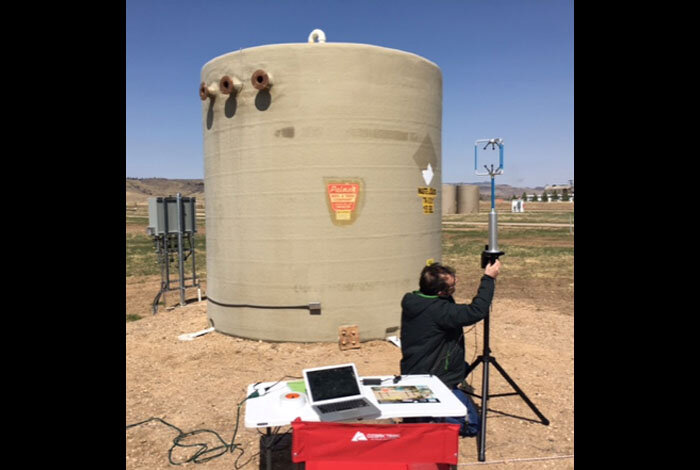The Standalone Low-Cost Rapid Leak Detection System (ALFaLDS) was designed to detect accidental leaks
ALFaLDS locates andquantifies natural gas leakage based on real-time measurements of methane and ethane (in natural gas) and atmospheric wind. All of these metrics are analyzed using machine learning code that is built to detect leaks. The code is trained using Los Alamos National Laboratory's high-resolution plume dispersion models, and the training is refined on-site using controlled emissions.
The test results have shown thatALFaLDS precisely locates and sizes projected methane leaks. This new capability to detect leaks with high speed and accuracy at a lower cost promises new automatic, affordable fugitive gas leak sampling at oil wells and gas fields.
 ALFaLDS is used during blind tests at the Fort Collins, Colorado Model Oil and Gas Test Site. Credit: Los Alamos National Laboratory.
ALFaLDS is used during blind tests at the Fort Collins, Colorado Model Oil and Gas Test Site. Credit: Los Alamos National Laboratory.
ALFaLDS success in detecting and quantifyingestimation of fugitive methane leaks at natural gas facilities could lead to a 90% reduction in methane emissions if the industry uses development.
ALFaLDS uses a small sensor thatmakes it ideal for use on vehicles and drones. In general, the Los Alamos team in their research develops sensors that easily integrate with a mini 3D sound anemometer and powerful machine learning code.
However, this code is self-contained and mayread data from any source of gas and wind, which helps to quickly find leaks and minimize fugitive emissions from the vast network of production, production and consumption of natural gas.
Through this integration, ALFaLDS offersa revolutionary approach to leak detection, oil and gas service providers, non-profit organizations studying emissions, and national laboratories and academic institutions studying natural gas production.
Read also
The annual mission in the Arctic has ended and the data are disappointing. What awaits humanity?
See the closest shots of the Sun's surface
Coronaviruses have learned to mimic human immune proteins and trick the body